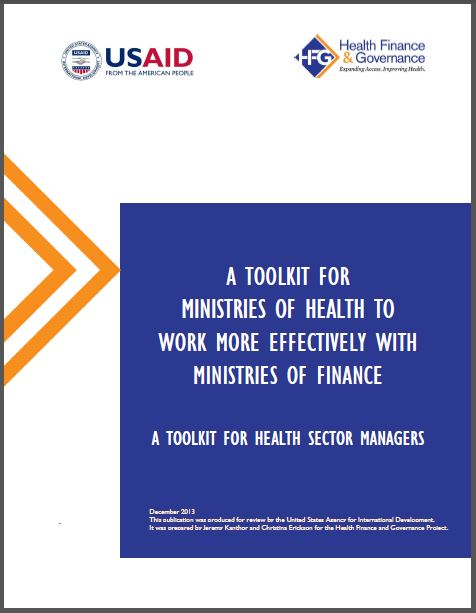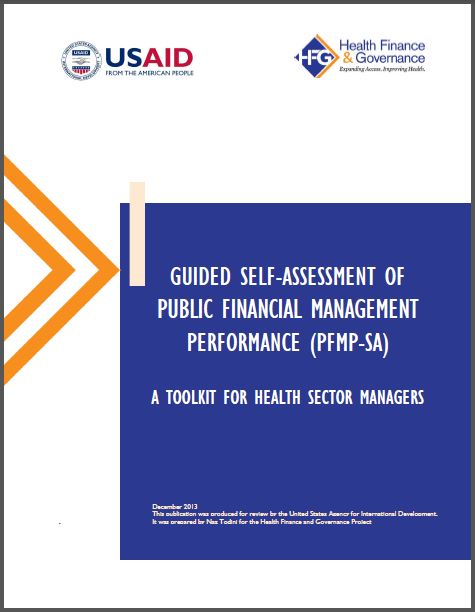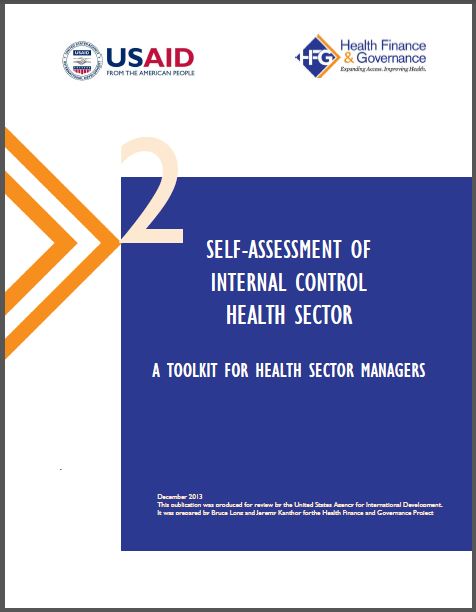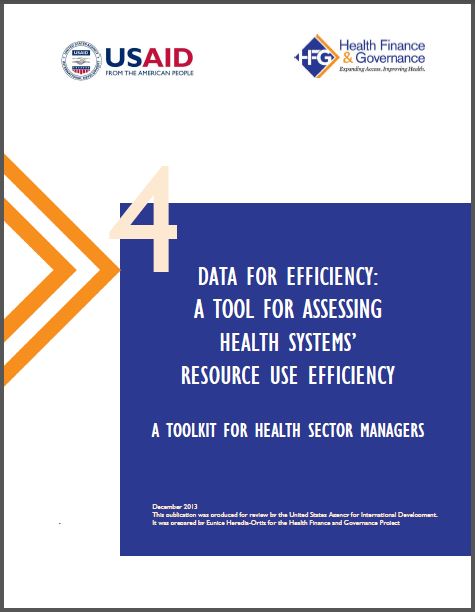A Toolkit for Ministries of Health to Work More Effectively With Ministries of Finance
Categories: Governance and Leadership, Publications, Tools
In many countries, Ministries of Health (MOHs) and Ministries of Finance (MOFs) determine which health services are delivered, when, where, and for whom. While MOHs are responsible for setting national health policy and managing the day-to-day delivery of public health services, they are dependent upon MOFs for establishing funding levels and releasing the necessary funds to finance MOH operations.
Designed for health sector managers, A Toolkit for Ministries of Health to Work More Effectively With Ministries of Finance, presents four different tools to help MOH staff better manage their resources and communicate more effectively with their MOF counterparts. The two institutions lack common language, systems, priorities, and incentives. Likewise, few opportunities exist outside the high-level meetings associated with annual budget negotiations for dialogue on the funding levels, multi-year funding requirements, and mechanisms necessary for improving health outcomes. The tool kit aims to help bridge the gap between these two important institutions. The four tools can be used separately or together, depending upon the needs of the managers.
The Toolkit:
Introduction: A Toolkit for Ministries of Health to Work More Effectively With Ministries of Finance
In countries around the world, Ministries of Health (MOHs) and Ministries of Finance (MOFs) play essential roles in how health systems function and when and to whom health services are delivered. While MOHs are responsible for defining the overall direction of national health policy and the day-to-day delivery of public health services, they are dependent upon MOFs that establish overall annual funding levels and release funds necessary to finance MOH operations. As a result, MOFs wield significant control over the funding and budget flexibility of MOHs.
The HFG toolkit presents a set of strategies, self-assessment methodologies, and performance management processes to help MOHs better manage their own resources and effectively communicate with MOFs.
1. Guided Self-Assessment of Public Financial Management Performance
Good performance of Public Financial Management (PFM) systems is one of the elements of governance that should be reinforced in support of sound, evidence-based health interventions. PFM performance, however, is typically assessed by considering the government as a whole, rather than the individual performance of such important sectors as health; often, the impact of PFM assessments on health is not differentiated from the rest of the government sectors.
This self-guided assessment adapts the Public Expenditure and Financial Accountability assessment methodology – developed and implemented by a multi-donor partnership including the World Bank and IMF – to focus specifically on the health sector. It elaborates 12 indicators of the health sector financial management and how MOH officials can use them to self assess their systems and procedures to improve accountability and performance.
2. Self-Assessment of Internal Control Health Sector
This tool is designed to help public health officials determine areas of strength and weakness in how public funds are managed and spent. It includes a set of general indicators for the health sector as well as a separate set of indicators specifically for the pharmaceutical supply chain.
The purpose of this document is to provide guidance and checklists to facilitate the self-assessment of internal control systems and practices in the health sector. Using accessible tools to assess internal controls and identify areas requiring improvements will enable health sector decision makers to demonstrate strong fiscal stewardship when justifying budget requests, including requests for increased health sector allocations, through the budget process.
3. Developing Key Performance Indicators
Key performance indicators (KPIs) represent a point of convergence between ministries of health and ministries of finance or, where separate, the central budget authority. This tool provides useful guidance for the health sector on developing and using KPIs and building these into the budget process. Specifically, it offers government managers responsible for planning, program implementation, monitoring and evaluation (M&E)—particularly in central or federal ministries of health—guidelines and tips for thinking strategically about program planning, defining performance indicators, setting KPI targets, and harnessing performance information.
The tool was piloted in Nigeria with the National Agency to Control AIDS and revised based on feedback from stakeholders.
4. Data for Efficiency: A Tool for Assessing Health Systems’ Resource Use Efficiency
Measuring efficiency across institutions and time is critical for improving health systems’ performance. This tool outlines key data categories and indicators necessary for assessing efficiency in the use of resources. It focuses on how to generate data and make planning and management decisions around sector-wide efficiency.
This tool is intended to help health program managers and administrators to better understand and assess efficiency in the delivery of health care services. In response to the complex task of measuring and assessing efficiency, this tool outlines key efficiency indicators in the use of resource inputs in the following areas:
- deployment of health personnel;
- utilization of medical products, vaccines and technologies; and
- use of health facilities and hospital care.








